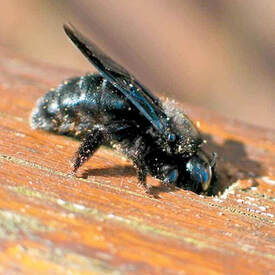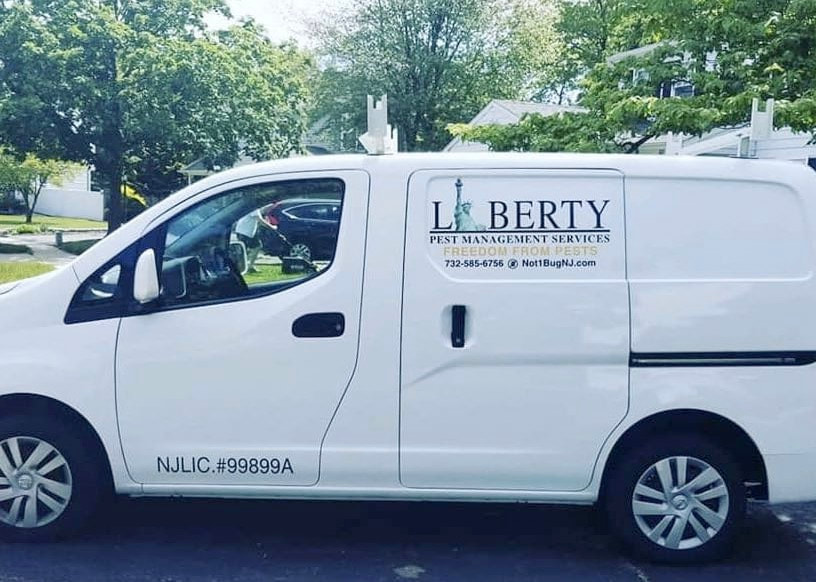
Carpenter Bees (Xylocopa Species)
Color: Blue-black, green or purple metallic sheen on abdomen.
Legs: Six
Shape: Oval
Size: 1″
Antennae: Yes
Flight: Yes
Carpenter bees are found in all 50 states.
Carpenter bees are valuable pollinators but can become a pest when they nest in or near urban areas.
Habits
Carpenter bees are solitary insects and do not live in colonies. They mate once a year and excavate a section in wood only large enough for the nest. Carpenter bees do not consume wood.
Habitat
The carpenter bee prefers to nest in softwoods, such as cedar or pine. They spend their winters in tunnels that are abandoned after the breeding season.
Threats
Usually the damage done by carpenter bees is not substantial. Occasionally structural damage can occur and their entry holes can be unsightly. Males aggressively protect the nests, but they do not have a stinger. Females have stingers, but generally only sting if you handle them or disrupt them from bring food to their nest.
Prevention
Carpenter bees prefer bare wood and can be discouraged from building a nest with paint or varnish. Sometimes persistent bees will try to inhabit painted wood and in that case it is best to call a professional pest control agency.
Color: Blue-black, green or purple metallic sheen on abdomen.
Legs: Six
Shape: Oval
Size: 1″
Antennae: Yes
Flight: Yes
Carpenter bees are found in all 50 states.
Carpenter bees are valuable pollinators but can become a pest when they nest in or near urban areas.
Habits
Carpenter bees are solitary insects and do not live in colonies. They mate once a year and excavate a section in wood only large enough for the nest. Carpenter bees do not consume wood.
Habitat
The carpenter bee prefers to nest in softwoods, such as cedar or pine. They spend their winters in tunnels that are abandoned after the breeding season.
Threats
Usually the damage done by carpenter bees is not substantial. Occasionally structural damage can occur and their entry holes can be unsightly. Males aggressively protect the nests, but they do not have a stinger. Females have stingers, but generally only sting if you handle them or disrupt them from bring food to their nest.
Prevention
Carpenter bees prefer bare wood and can be discouraged from building a nest with paint or varnish. Sometimes persistent bees will try to inhabit painted wood and in that case it is best to call a professional pest control agency.

